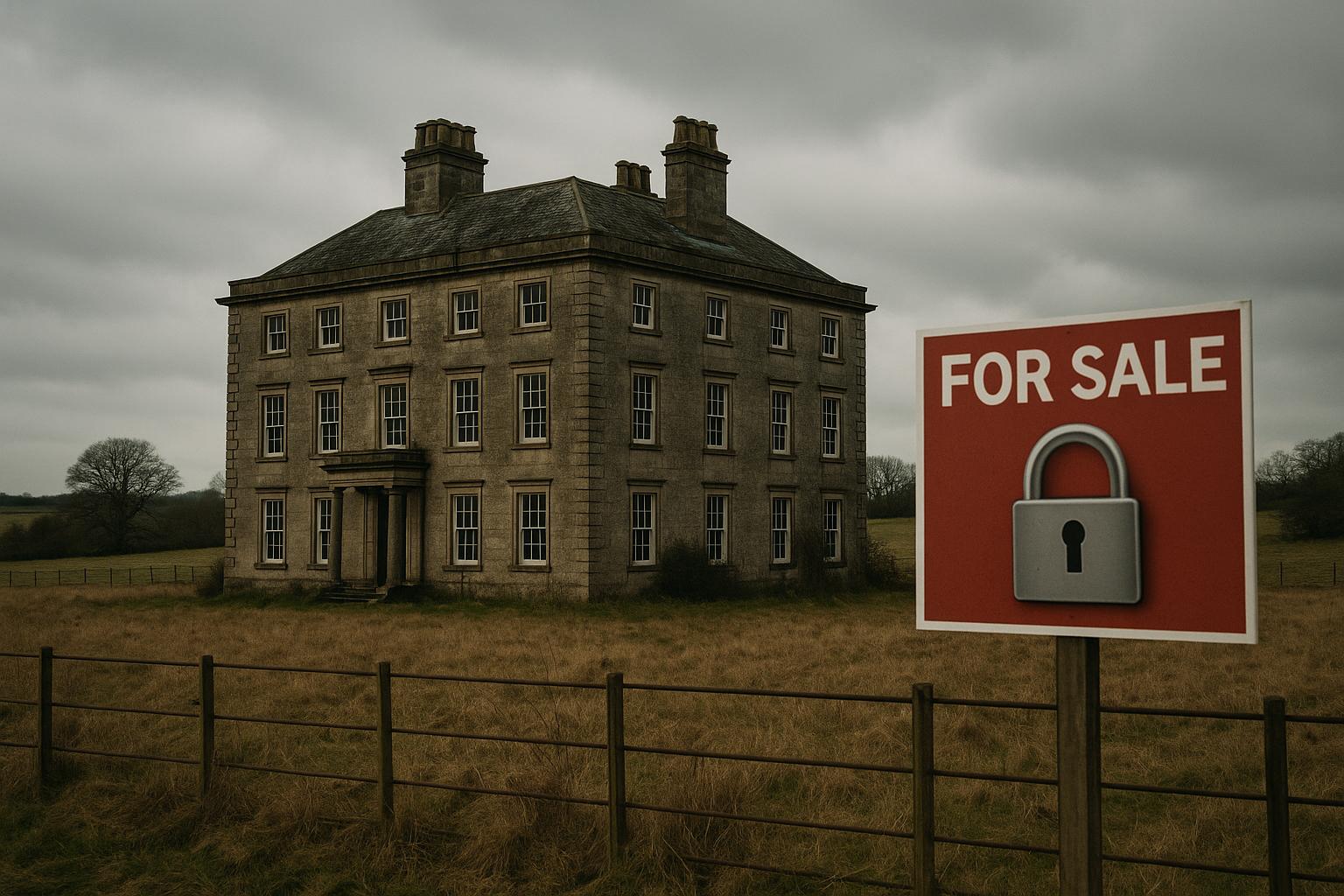The UK housing market is showing signs of an early slowdown ahead of the traditional pre-Christmas lull, according to data from property website Zoopla. Recent figures suggest demand from homebuyers and the number of agreed sales are down compared to the same period last year. Zoopla attributes this accelerated dip partly to a surge in late 2024 sales, as many rushed to beat the expiry of generous stamp duty discounts in April 2025. The ongoing uncertainty surrounding the autumn Budget is also weighing on the market, especially for homes priced above £500,000.
Regional disparities are apparent, with some areas such as Scotland, Yorkshire and the Humber, the South West, and the West Midlands experiencing stronger sales than a year ago. Conversely, regions including Wales, the South East, East of England, and London have seen a sharper decline in new sales agreements. House price growth has nearly stalled in southern England, while it remains robust in northern England, Wales, and Scotland. Northern Ireland stands out with a notable annual house price increase of 7.6%. Zoopla also notes that the average property takes about 37 days to sell, rising to 45 days in London.
Despite signs of cooling, the housing market still has momentum. Zoopla estimates an unusually large pipeline of nearly 350,000 homes valued at over £100 billion currently in the sales process, the highest since May 2021 during the height of the post-pandemic housing boom. This pipeline, combined with stable mortgage rates, has encouraged more sellers — many of whom are also buyers — to enter the market. First-time buyers remain a strong source of demand. Richard Donnell, Zoopla’s executive director, described the slowdown as "modest" and less severe than the disruption seen after the 2022 mini-budget, predicting house prices may still end 2025 between 1% to 1.5% higher than at the start of the year.
Industry voices echo a cautious optimism. Guy Gittins, CEO of Foxtons, characterised the current market weakness as a temporary "pause" driven by buyers and sellers awaiting clarity on taxation and economic policy from the November Budget. He expressed confidence that once this uncertainty subsides, market activity and confidence, especially in London’s well-funded market, will quickly recover.
Additional data from other sources supports this trend of regional variation and caution in the housing market. The Royal Institution of Chartered Surveyors (RICS) reported in March 2025 that buyer demand was at its lowest since late 2023, with house prices showing the softest growth since September of that year. This softer market performance was influenced by the end of certain tax incentives and broader economic uncertainties.
More detailed analysis from Zoopla’s September 2025 House Price Index highlighted that the high-end market—homes valued above £500,000—is under particular pressure due to speculation about potential tax changes in the upcoming Autumn Budget. Rumours of Chancellor Rachel Reeves potentially replacing stamp duty with a national property tax on higher-value homes and introducing capital gains tax on properties worth more than £1.5 million have dampened buyer demand and listings in this segment, with demand for £1 million+ homes down 11%. Lower-priced housing sectors, particularly where average prices are below £200,000, are faring better, with notable growth in areas like Kirkcaldy in Scotland and Oldham in northern England.
Government data corroborates these regional variations in house prices. The UK House Price Index for March 2025 recorded an average UK price of £271,000, reflecting a 6.4% annual increase. England led with a 6.7% rise to £296,000, while Scotland and Wales showed more moderate growth. The North East of England experienced the strongest inflation at 14.3%, contrasting sharply with London’s minimal 0.8%. By April 2025, the annual price increase had softened to 3.5%, indicating a cooling trend, with some regions such as the South West seeing slight price declines.
In summary, while the UK housing market is showing early signs of slowing, particularly at the higher end and in southern regions, it remains buoyed by a strong pipeline of sales and stable mortgage rates. Regional disparities continue, with northern parts of the UK demonstrating more resilient price growth. The market is currently in a holding pattern as buyers and sellers anticipate the outcomes of the forthcoming Budget, but industry experts remain hopeful for a rebound in confidence and activity once policy clarity is achieved.
📌 Reference Map:
- Paragraph 1 – [1] (The Independent)
- Paragraph 2 – [1] (The Independent)
- Paragraph 3 – [1] (The Independent)
- Paragraph 4 – [1] (The Independent)
- Paragraph 5 – [1] (The Independent)
- Paragraph 6 – [2] (Reuters)
- Paragraph 7 – [3] (MoneyWeek), [1] (The Independent)
- Paragraph 8 – [4] (UK Gov), [5] (UK Gov), [6] (UK Gov), [7] (UK Gov)
Source: Noah Wire Services
